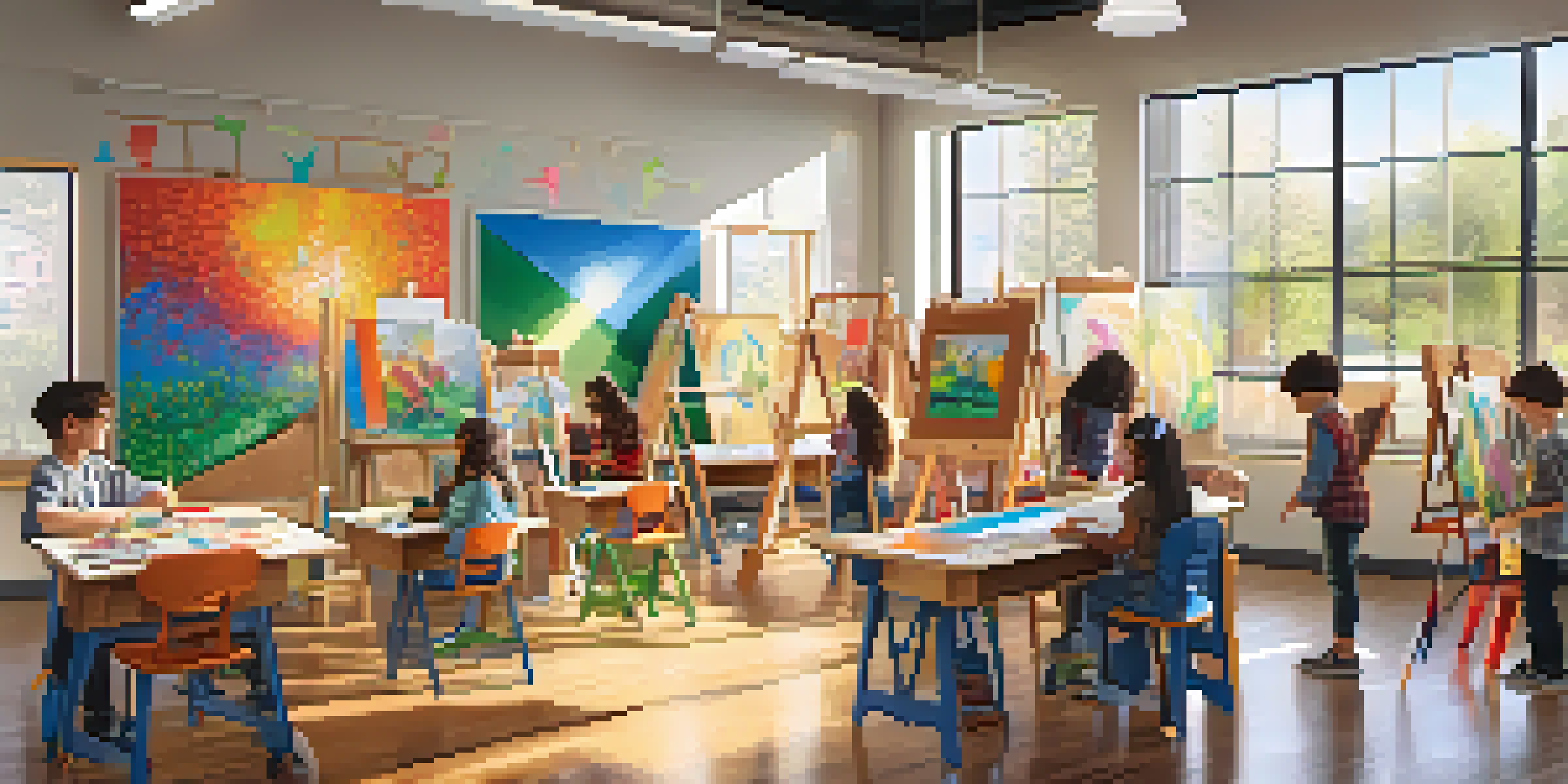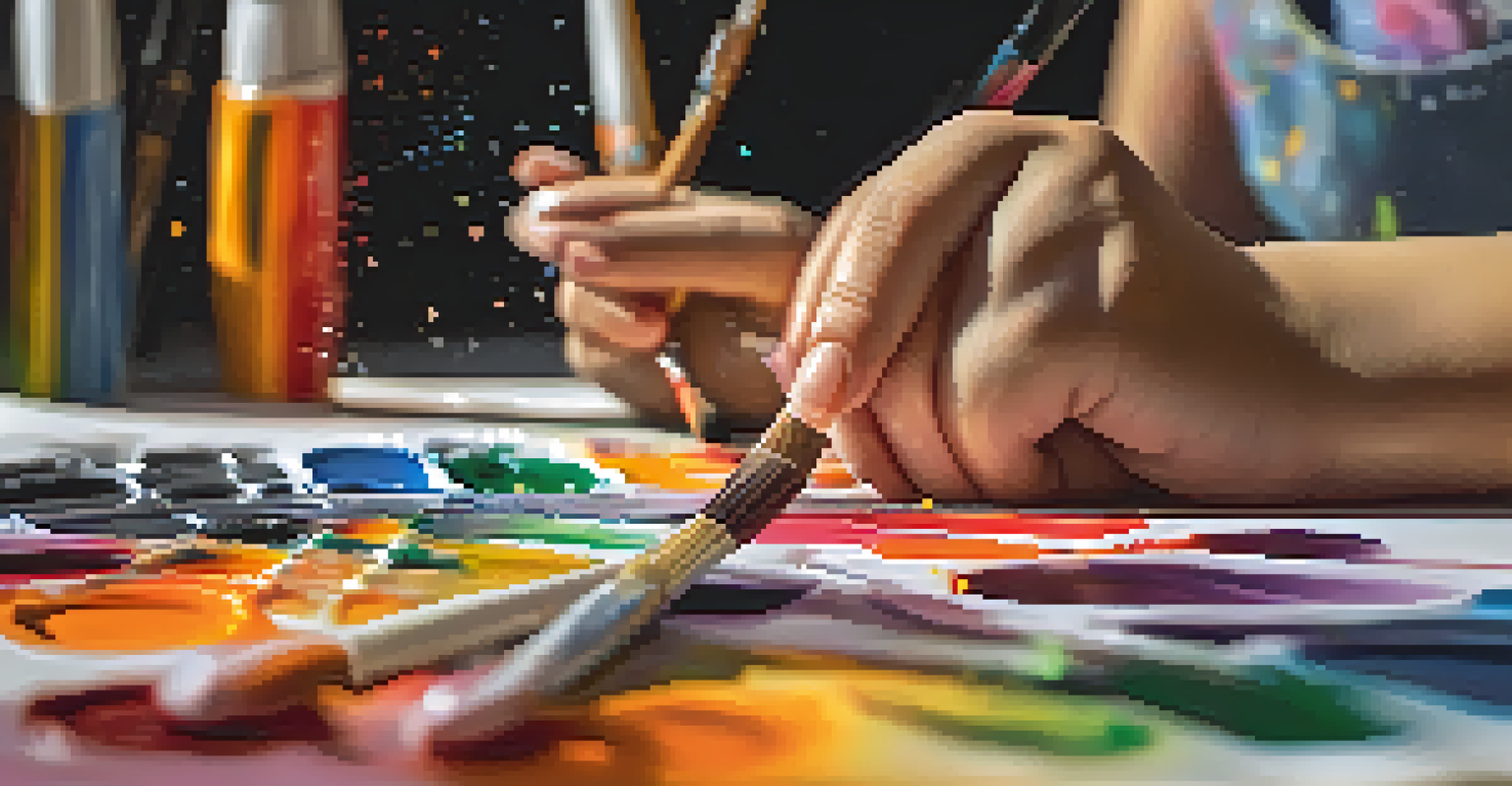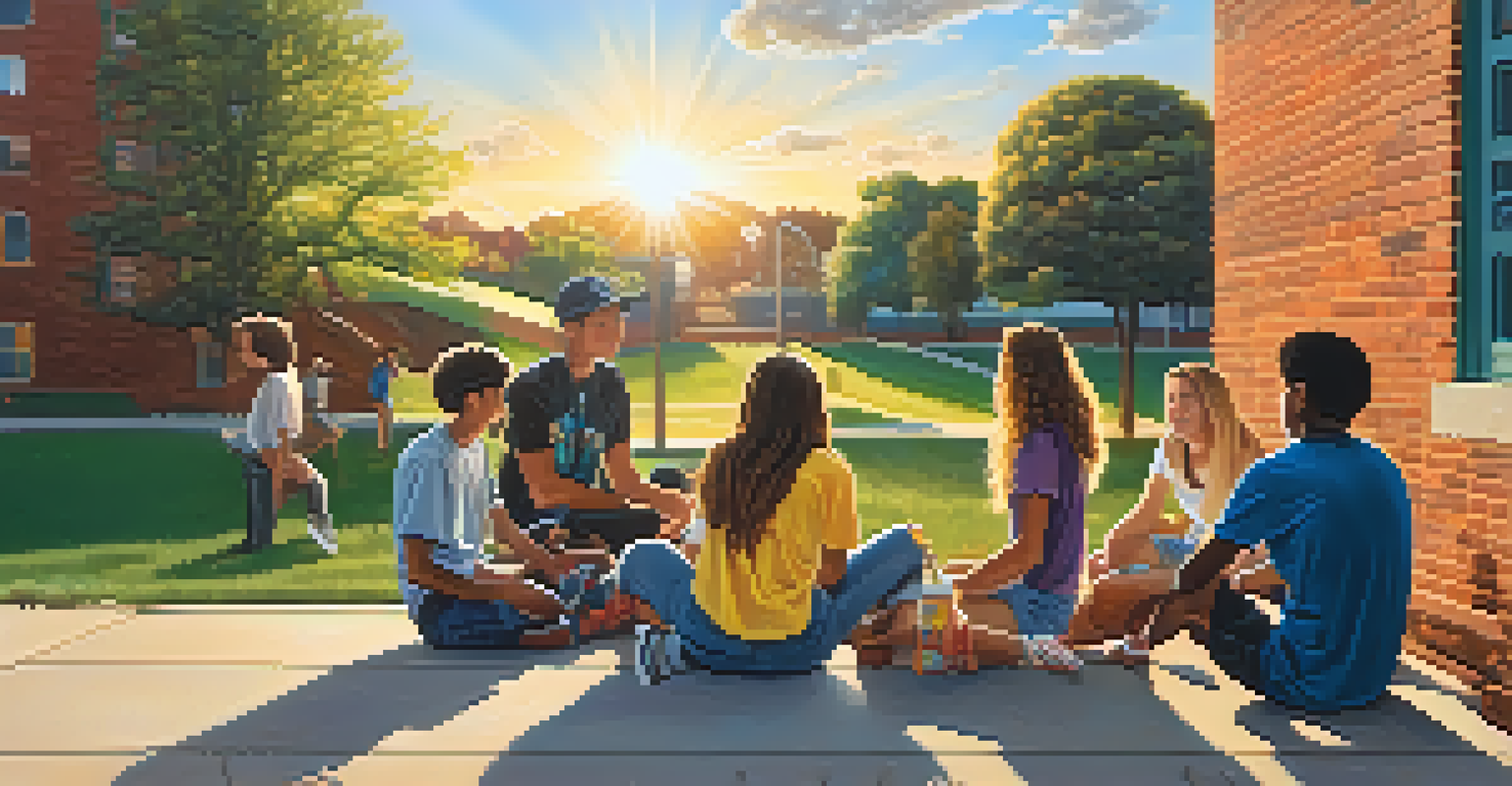The Role of Art Education in Building Resilience in Youth

Understanding Resilience: What Does It Mean for Youth?
Resilience refers to the ability to bounce back from challenges and adversity. For young people, this quality is crucial as they navigate various life experiences, from academic pressures to social dynamics. Think of resilience as a rubber band; the more it stretches, the more it can return to its original shape. This ability not only helps youth cope with stress but also builds their confidence and self-esteem.
The greatest glory in living lies not in never falling, but in rising every time we fall.
Incorporating art education into youth programs can significantly enhance resilience. By engaging in creative activities, students learn to express their emotions and thoughts, providing them an outlet for stress. Furthermore, this expression fosters a sense of belonging and community, which is vital during the formative years. When kids feel connected, they are more likely to develop the strength needed to face life's challenges.
Ultimately, understanding resilience lays the groundwork for how art education can play a role in youth development. By recognizing what it means to be resilient, educators and parents can better support young people in cultivating this essential trait through creative expression.
Art Education as a Safe Space for Expression
Art education creates a safe environment where young individuals can express themselves without fear of judgment. This freedom is essential for fostering creativity and innovation. When students feel secure in sharing their thoughts and feelings through art, they are more likely to explore their emotions and confront their challenges head-on. It's like having a blank canvas where they can paint their experiences.

Through various art forms—be it painting, drama, or music—students can articulate feelings that might be difficult to verbalize. This process not only promotes emotional intelligence but also encourages self-reflection. For instance, a student who may struggle with anxiety might find solace in painting, allowing them to process their feelings in a constructive manner.
Resilience Through Art Education
Art education helps youth build resilience by providing a safe space for emotional expression and creative problem-solving.
By providing this sanctuary for self-expression, art education equips youth with the tools to navigate their emotions. As they learn to articulate their thoughts through artistic mediums, they are simultaneously building the resilience necessary to tackle life's ups and downs.
Cultivating Problem-Solving Skills Through Creativity
Art education inherently involves problem-solving, whether it's figuring out how to convey an idea visually or composing a piece of music. This aspect of art teaches students to approach challenges with a creative mindset. For example, when faced with a difficult project, students must brainstorm solutions and think outside the box, which strengthens their resilience.
Creativity takes courage.
Moreover, the iterative process of creating art—experimenting, failing, and trying again—mirrors real-life challenges. When young people learn that failure is a part of growth, they become more adept at overcoming obstacles. This understanding encourages them to take risks and embrace new opportunities, knowing that setbacks can lead to success.
By honing these problem-solving skills through artistic endeavors, young individuals cultivate resilience that translates into other areas of their lives. They learn to face challenges with confidence, making them better equipped to handle academic, social, and emotional hurdles.
Building Empathy and Social Connections in Art Classes
Art education not only nurtures individual expression but also fosters empathy and social connections among peers. Group projects and collaborative art-making encourage students to work together, share ideas, and appreciate diverse perspectives. This collaborative spirit helps develop strong interpersonal skills that are vital for resilience.
When students participate in group art activities, they learn to communicate effectively and resolve conflicts, laying the foundation for healthy relationships. For instance, a student may find themselves collaborating on a mural, learning to value teamwork while also expressing their unique vision. These experiences create bonds that can support them during challenging times.
Fostering Empathy in Collaboration
Collaborative art projects enhance empathy and social connections, equipping students with essential interpersonal skills.
As students develop empathy through artistic collaboration, they also learn to understand and share the feelings of others. This emotional connection not only enhances their resilience but also creates a supportive community that encourages everyone to thrive.
The Role of Art Education in Enhancing Self-Esteem
Engaging in art education can significantly boost a young person's self-esteem and self-worth. Creating something tangible allows students to take pride in their work, reinforcing a sense of accomplishment. This feeling of achievement can be especially powerful for those who may struggle academically or socially, providing them with an alternative avenue for success.
For example, a student who excels in painting might find joy and confidence in showcasing their artwork at a school exhibition. This recognition not only validates their efforts but also inspires them to continue pursuing their passions. As students receive positive feedback from peers and educators, their self-esteem flourishes, fostering a greater sense of resilience.
By reinforcing self-esteem through art, students learn to believe in their abilities, enabling them to face challenges with greater confidence. This increased self-worth becomes a vital aspect of their resilience toolkit, helping them tackle various hurdles throughout their lives.
Art as a Tool for Coping with Stress and Anxiety
Art education serves as a powerful tool for coping with stress and anxiety, both common experiences for youth today. Engaging in creative activities allows students to channel their emotions into something productive and fulfilling. For instance, drawing or writing can act as a form of mindfulness, helping them to focus and find calm amidst chaos.
When students immerse themselves in artistic endeavors, they often experience a sense of flow—a state where they lose track of time and become fully absorbed in their work. This flow state can be incredibly therapeutic, providing a much-needed escape from daily pressures. It’s like diving into a pool on a hot day; the relief is instant and refreshing.
Long-Term Benefits of Creativity
The skills gained from art education lead to lifelong resilience, adaptability, and creativity in personal and professional life.
By incorporating art into their lives, young people can develop healthier coping mechanisms for managing stress. This resilience-building strategy empowers them to handle difficulties more effectively, laying the groundwork for a balanced and fulfilling life.
Long-Term Benefits of Art Education for Youth
The benefits of art education extend far beyond the classroom, influencing youth into adulthood. The resilience skills developed through artistic engagement can lead to improved emotional regulation, stronger relationships, and greater adaptability in various life situations. These long-term benefits are crucial for navigating the complexities of adult life.
Moreover, individuals who have participated in art education often carry a sense of creativity and open-mindedness into their careers. This adaptability allows them to approach challenges from different angles, embracing change rather than shying away from it. For example, a former art student may excel in a dynamic work environment, using their creative problem-solving skills to tackle unexpected issues.

In essence, art education not only shapes youth into resilient individuals but also cultivates lifelong skills that enhance their personal and professional lives. By investing in art education today, we are paving the way for a more resilient and creative generation.